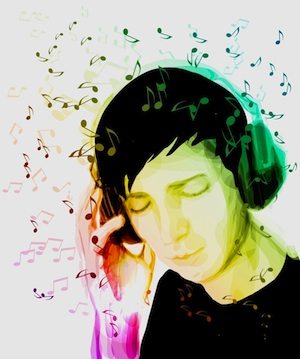I would be lying if I said that ear training came easily to me. Like most percussionists I knew in college, rhythm exercises and sight singing were a breeze, but trying to transpose Mozart after three listens seemed like a torture specifically designed to punish those of us who primarily hit things with sticks!
Thinking that I left ear training behind after a gruesome sophomore year of chord progressions at the small private university I attended, I transferred to a big public university and tested back into freshman ear training with a music professor considered a guru in the field.
Learning from an ear training guru had its benefits and drawbacks. For one, she literally seemed to read your mind: when you made a mistake in sight-singing, she quickly pointed out what you were thinking as you sang – and she was right every time! On the other hand, sometimes I felt that she was speaking some unknown language only understood by visitors from Andromeda… I did pass ear training, but only by the skin of my ear drum.
Nearly 200 compositions and a decade later, you would think that I overcame my ear training weakness. The truth is that I still struggle with ear training on a daily basis, but I developed methods of ear training that worked with my strengths (like timbre and rhythm) and minimized my weaknesses (bad short-term memory and complex harmonic transposition).
Aural skills for a percussionist composer
Music plays in my head each and every day. Until an über-genius at the MIT Media Lab invents a machine that translates notes playing in my brain directly into Finale, I have to use my aural skills to transcribe melodies, harmony, and rhythm. I can write rhythms in my sleep, but conquering harmony and a long melody challenges my (extremely visual) learning style.
In college, I created a paper keyboard that I used during exams to “play” out melodies that I heard. For some reason, my fingers acted like a computer, processing melodies and bass lines easily. Now when I need a melody, I sing it out loud several times and can then play the tune quickly with a keyboard. My fingers just “know” the right notes.
“Formado en un Lugar Secreto” from the Creation Oratorio, performed by the Millikin University Women’s Choir and Percussion Ensemble
Play to your strengths
A percussionist’s world is full of rhythm and timbre. I use my strength in timbre to decode harmonies. In my mind I hear the harmonies – almost see them – hovering around the lone melody. Sometimes the timbre seems like a harsh cloud full of atonal lightening, and sometimes I feel the washing sonorities of harmonic beauty like warm waves of water.
I learned how to translate these images and emotions into actual notation with the help of a keyboard. Sometimes, in an almost Zen-like state, my fingers fly over the black and white keys forming complex polytonality without any conscious effort, easily translating my soul into music.
I develop my aural skills with ear training in a number of ways. One of my secret weapons is the Repository of Scales and Melodic Patterns by jazz musician Yusef A. Lateef. This book is an incredibly thorough text that explores complex permutations of global scales (ex. Disjunct Egyptian Polytetrachord or the “Synthesis and contraction of two octave C scale and its intervallic retrograde inversion”!). I improvise mini-compositions with his complex scales, creating new harmonies that meld into the vast expanse of musical knowledge floating haphazardly in my mind. These become part of the unconscious harmonies and melodies that flow through my compositions.
… and make sure you do play!
The most important ear training activity for any musician is therefore performance, and preferably performance within an ensemble
A composer is not a composer unless he or she is a performing musician. The little blotches of ink on the page are meaningless if you cannot understand musical form, orchestration, harmony, dynamics, solos, etc. from the perspective of a performer.
The most important ear training activity for any musician is therefore performance, and preferably performance within an ensemble. Learning how to train your ears to hear the next key change, tempo change, different instruments, texture, timbre, melody, harmony, and rhythm take your compositions to the next level. For me this means that every Sunday I jam out on the congas at church, I steal precious moments on a piano when I can, and I head out with a community orchestra for a public concert on a monthly basis.
Someday I may be able to transcribe an entire symphony playing in my head in a matter of minutes, but until then I will work on my ear training skills each and every day. And you should do the same.








